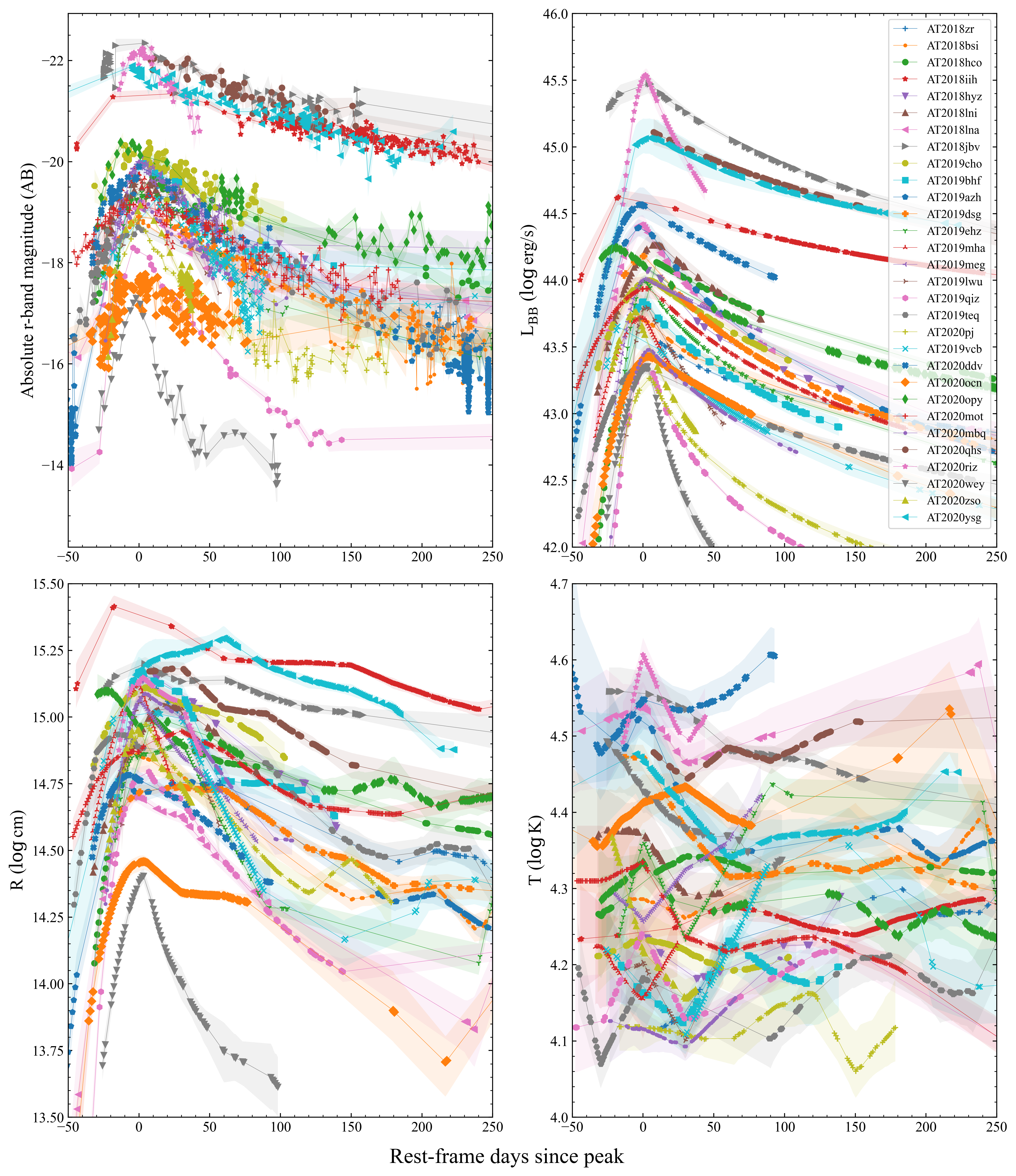I study tidal disruption events (TDEs) and their host galaxies at optical and ultraviolet wavelengths to understand accretion onto supermassive black holes and their connections to their host galaxies.
1. Characterizing TDEs and their light curves

The Zwicky Transient Facility has been extremely successful in discovering new TDEs (>60 over the duration of ZTF-I and ZTF-II; see figure to the left for the ZTF-I sample). As we grow our sample of observed TDEs, we can begin to do population studies of these transients. One of the most important questions surrounding TDEs and their light curves is whether or not we can use them to measure the masses of the black holes at the centers of these events. In theory, the mass of the black hole should be imprinted in some way on the light curve and by characterizing these light curves (e.g., through timescales), we can begin to understand whether our theoretical predictions are true. I have done extensive work on studying the light curves of the ZTF sample of TDEs. See here for more!
2. TDE Host Galaxies

TDE host galaxies are a puzzling population. Studies have shown that the majority of them are "green" in color, i.e. they live in a place on a color-mass diagram called the green valley (see to the right) between blue, star-forming galaxies and red, quiescent galaxies, where only ~13% of the general galaxy population resides. TDE host galaxies become even more puzzling when looking at their morphologies. Studies have also shown that they are generally more centrally concentrated than other galaxies of the same mass and the same color. Post-starburst, or E+A galaxies, are also overrepresented among TDE host galaxy populations. E+As are rare, comprising less than a few percent of the general galaxy population and yet they consistently host TDEs. All of these characteristics must somehow increase the TDE rates in these galaxies and my research focuses on figuring out why and how. See here for more!






